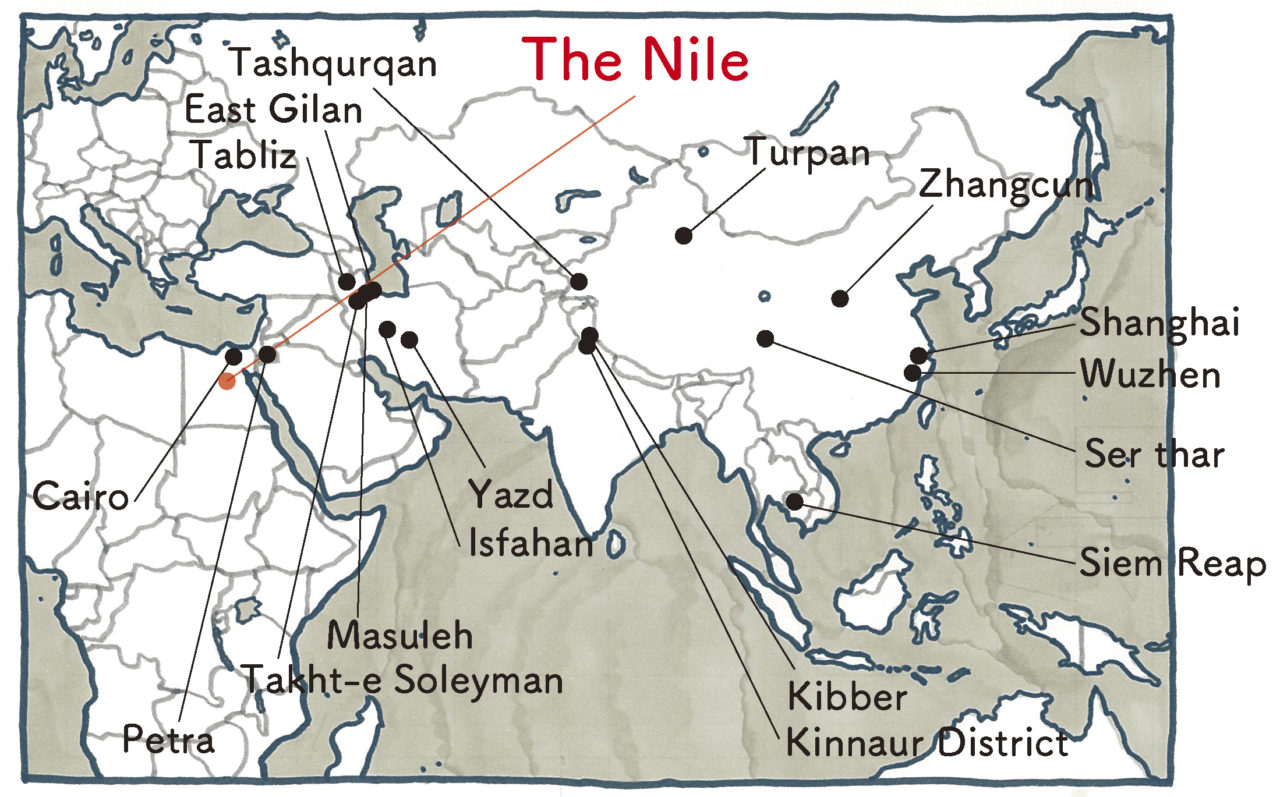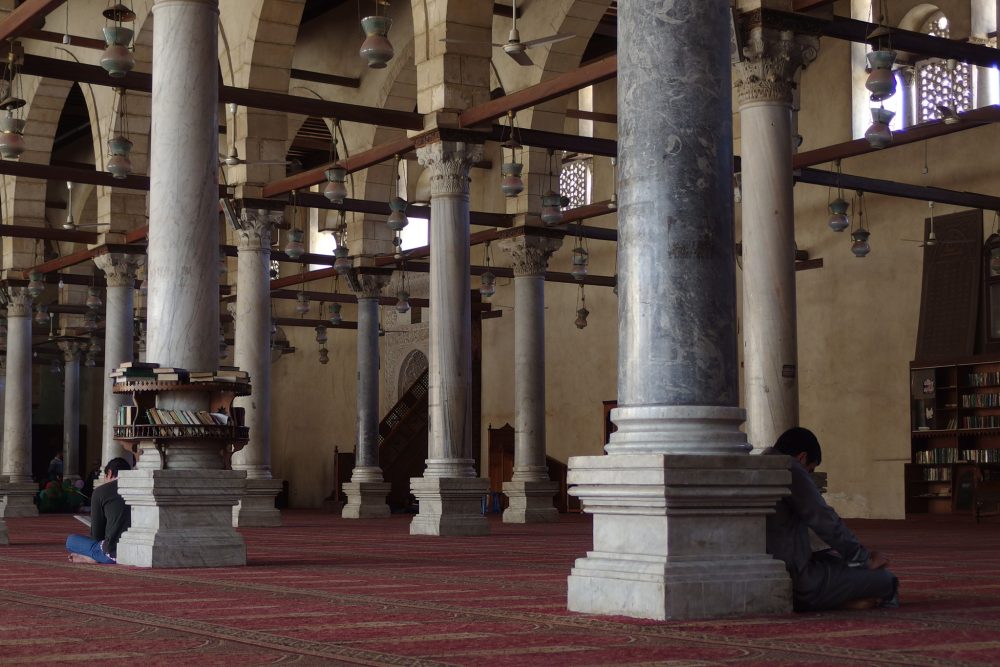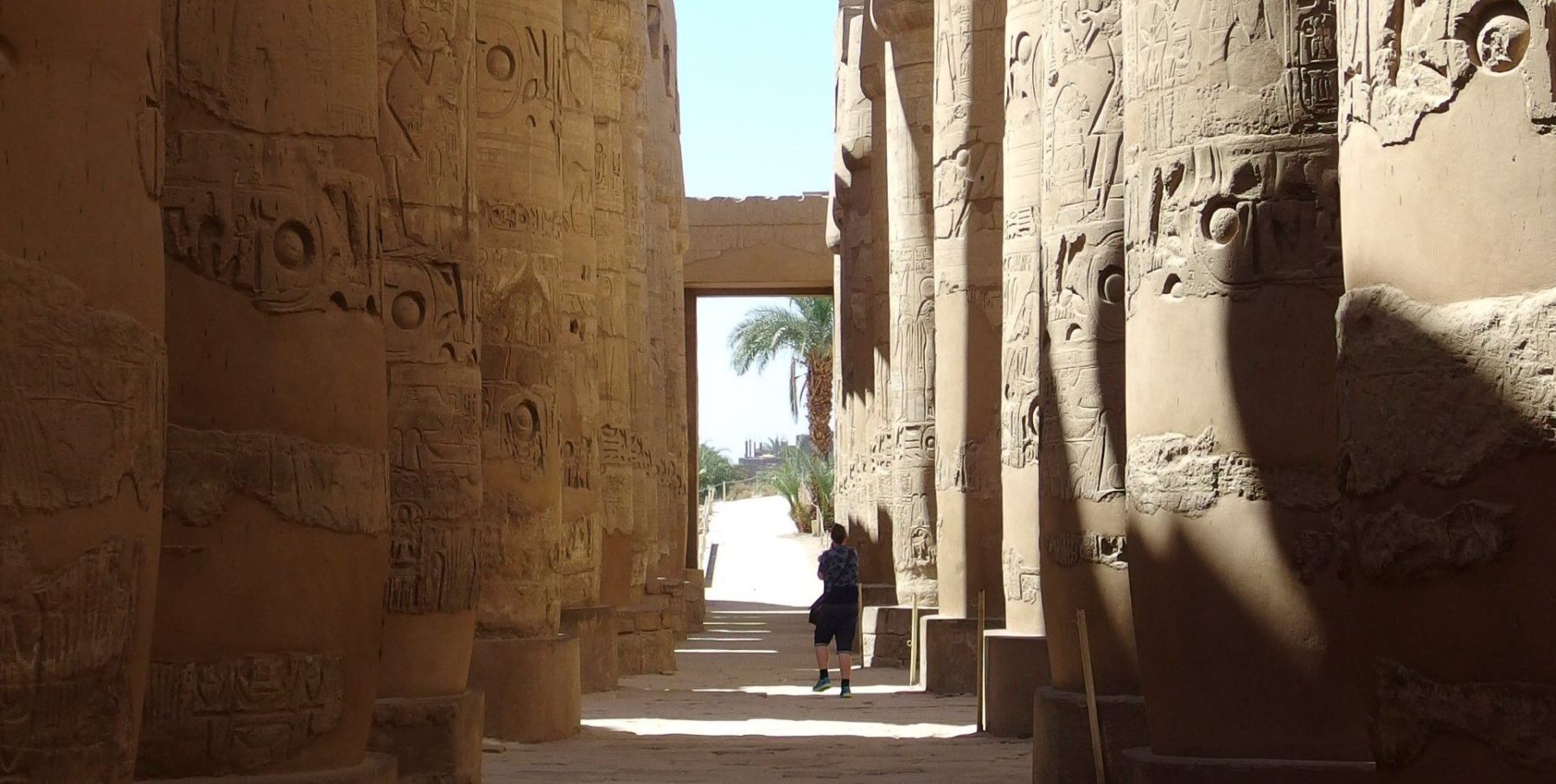
Series Traveling Asia through a Window
Rushing Along the Nile: Egypt and the Nile
10 Dec 2020
After walking around Cairo for a few days, I took a flight to Aswan, Egypt’s southernmost city. From there, I followed the Nile River north for about ten days back to Cairo together with acquaintances and a driver. Not only was this mode of travel was an utter joy after all the time I had spent traveling by public transportation, there were also areas along the way where by law a police escort was required, making the choice a preferable one in a country like Egypt that is not always safe.
-
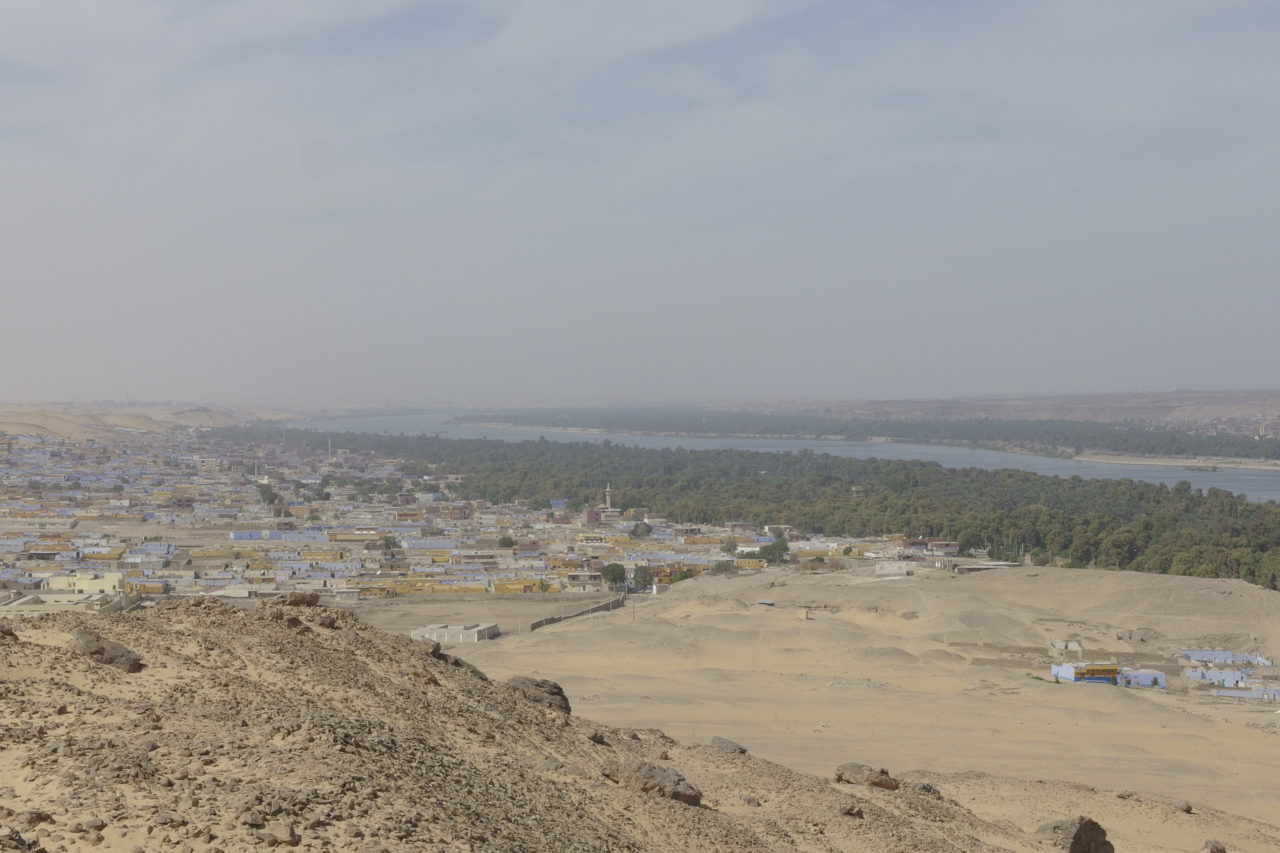
The Nile River as seen from Aswan (Nubian Village on the left)
While on the road, we stopped by a number of ancient temples that dotted the path alongside the Nile. Inside, they were all covered in strange carvings and reliefs. Seeing these reminded me of the Museum of Egyptian Antiquities, which I visited in Cairo. The Museum seemed to be in disarray, as if I’d wandered into some kind of warehouse.
While there, I found rows of fantastic statues made of either stone or jewels that combined animal and human. They were of all different sizes as well, some larger than a person’s body and other as small as a fingertip. These gave me a greater sense of simple innocence than any other ancient art I had seen so far. Three thousand years ago, there were people here who had the idea of placing a bird or a crocodile’s head on a human body. This struck me as amusing, even adorable. I imagined the ancient people who lived within these overwhelmingly concrete figures as they sat contained in their cluttered showcases.
-
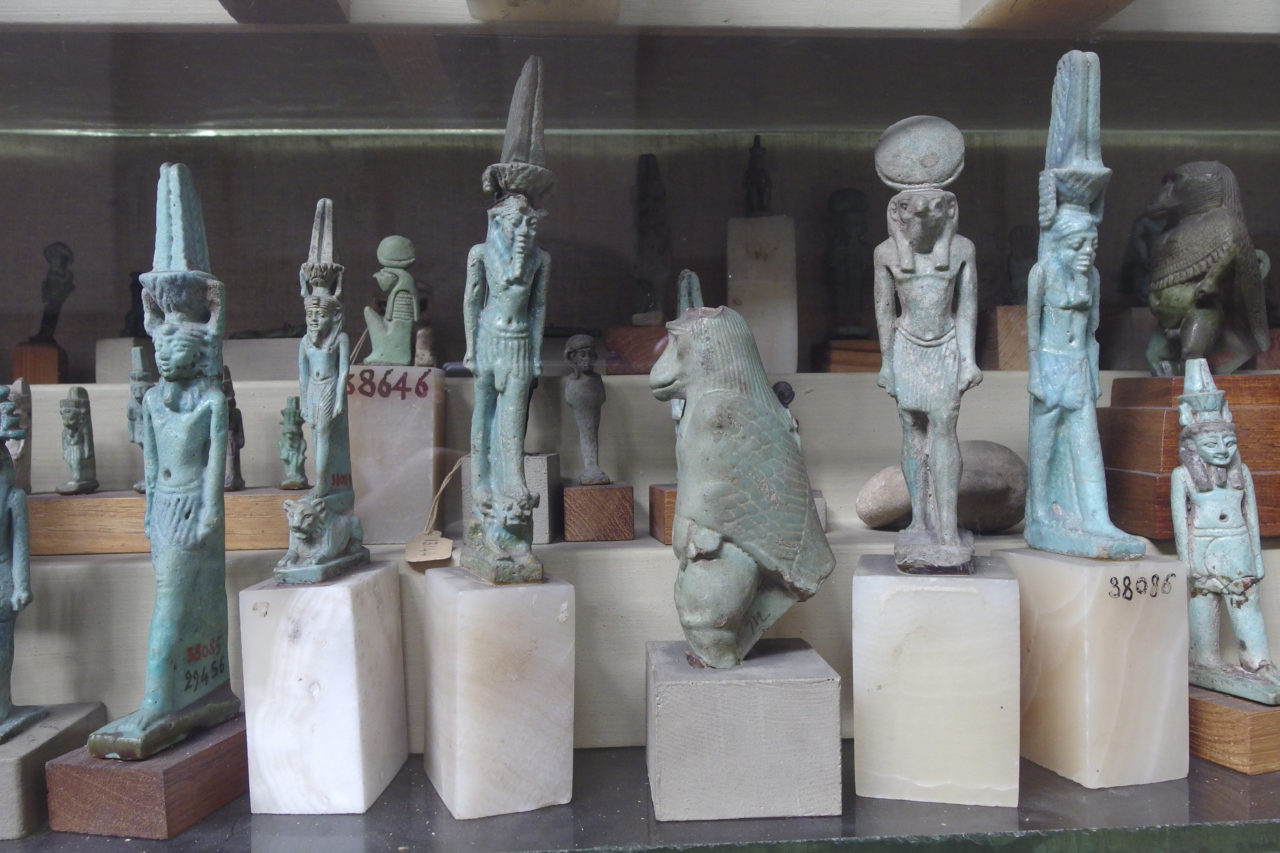
The jumbled collection of ancient sculptures at the Museum of Egyptian Antiquities
The ancient temples alongside the Nile River also contained remains that thoroughly attempt to convey something through their reliefs or techniques in their presentation. The idea of attempting to interpret every one of these reliefs carved 2,000, even 3,000 years ago feels daunting. However, it would be possible for us to discover something if we narrowed our scope to windows.
While I do not have the knowledge needed to speak of ancient temples, I’d like to make some sort of attempt to do so by way of various architectural techniques regarding openings.
I first visited the Temple of Kom Ombo, slightly to the north of Aswan. While the temple was built all the way back in 300 BC, I was shocked to find two identical spaces next to one another, with two gods enshrined side-by-side. It reminded me of the way that three gods can be found alongside one another in Japan’s Ujigami Shrine. When I arbitrarily understood the place to be like a Japanese shrine, I began to feel a sense of familiarity with ancient temples.
-
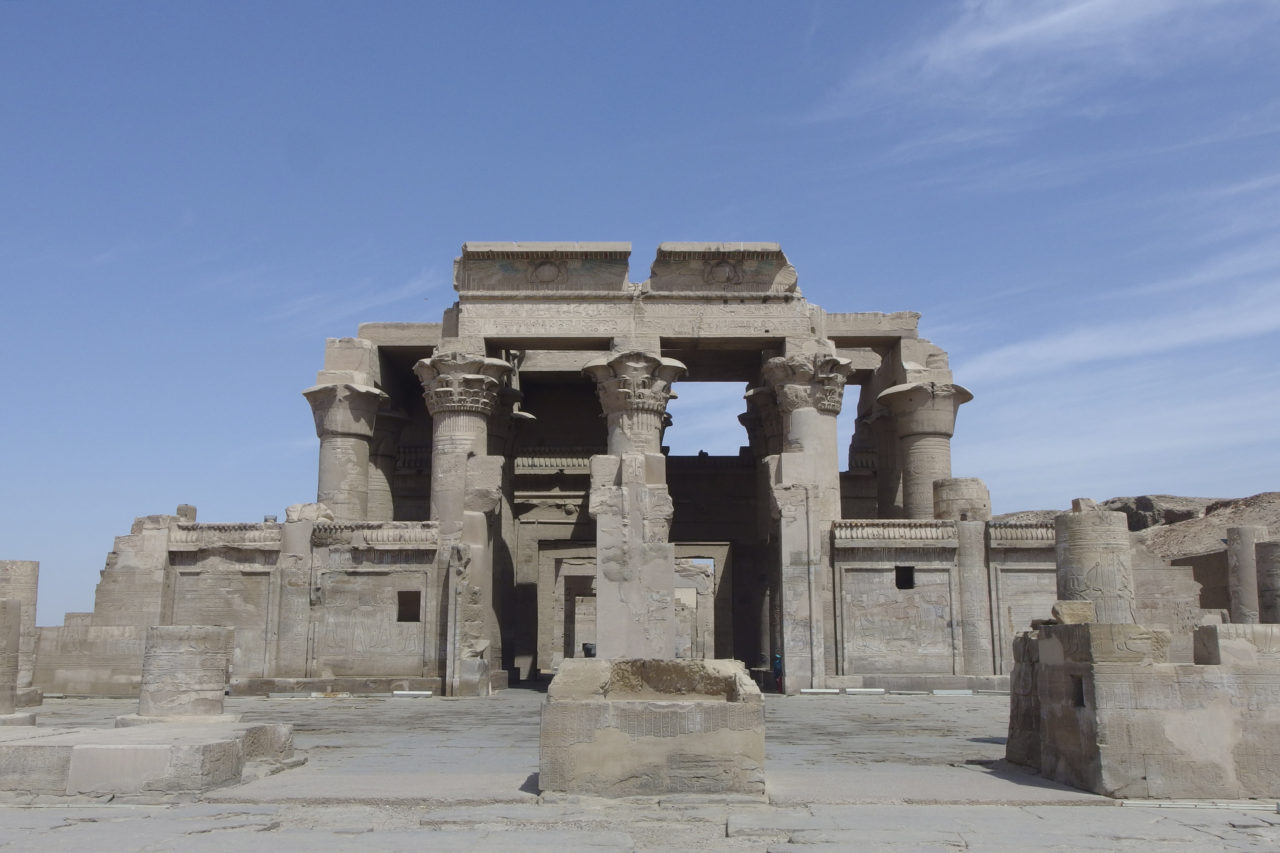
The Temple of Kom Ombo. Similar spaces are found next to one another on both sides.
Looking in from the entrance, one can see the floor rising as it goes deeper into the temple, similar to the rising floors of the continuous rooms found in the homes of traditional samurai families used to create an impressive space. The ceiling also gets gradually lower at the same time, creating an even more intense feeling of perspective along with the many separations created by the gate-shaped relief-covered openings. Your gaze ultimately rests on a stone where it is said a god was enshrined. This is a very detailed and sophisticated technique, showing that such dramatic spaces were already sought after more than 2,000 years ago.
-
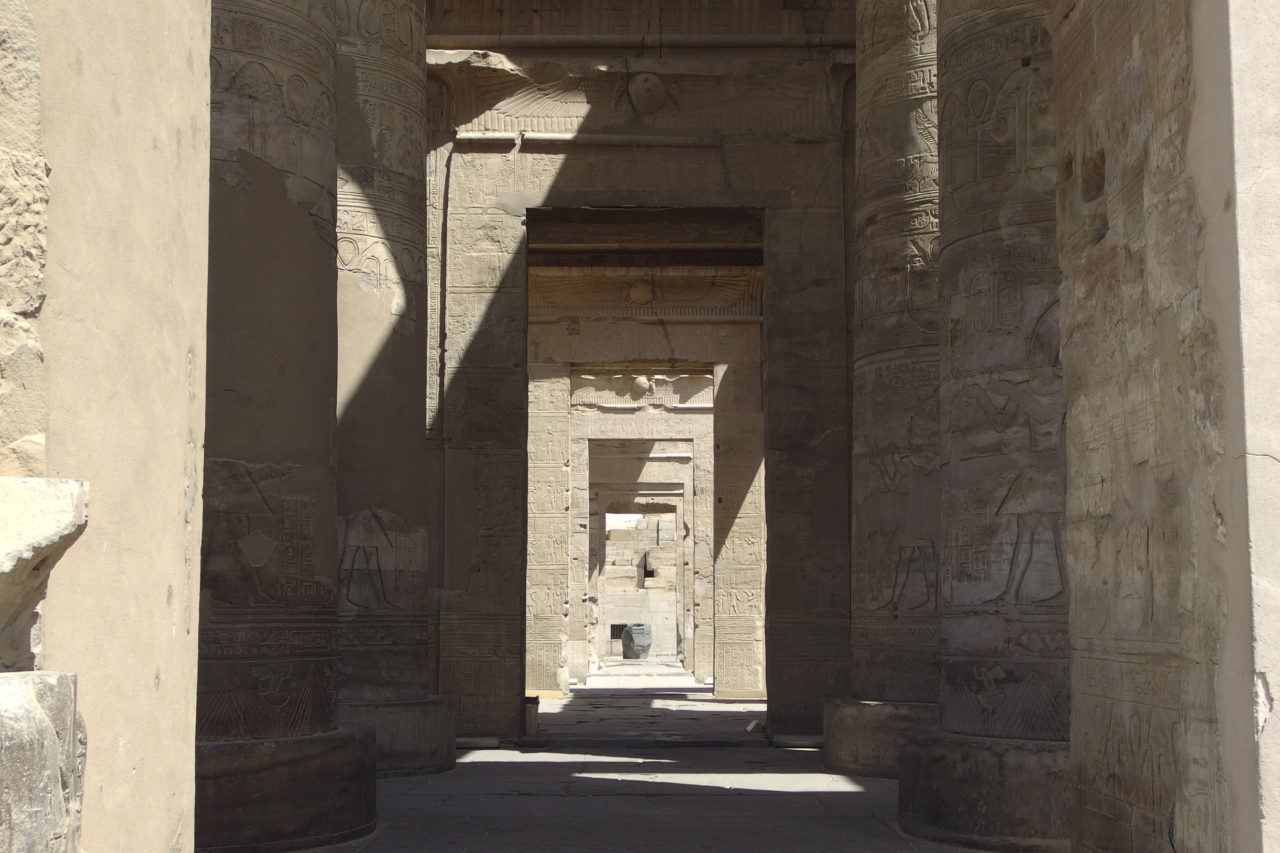
The perspective of the Temple of Kom Ombo
We next visited the Karnak Temple Complex near the city of Luxor (built around 1500 BC). Here I found a high window that one might even call the origin of the clerestory [1]. Though much of its effect has been lost as a large portion of the ceiling has collapsed by now, light must have illuminated the reliefs carved deep into its sandstone pillars 3,000 years ago as it poured in from the vertical lattice windows cut out of rock. The thickness of the pillars combined with the extremely short beams create a space that I’d never seen before, but even its architecture from 3,500 years earlier did not by any means feel alien when considering that it used windows that shared something in common with later Christian churches and even contemporary buildings.
-
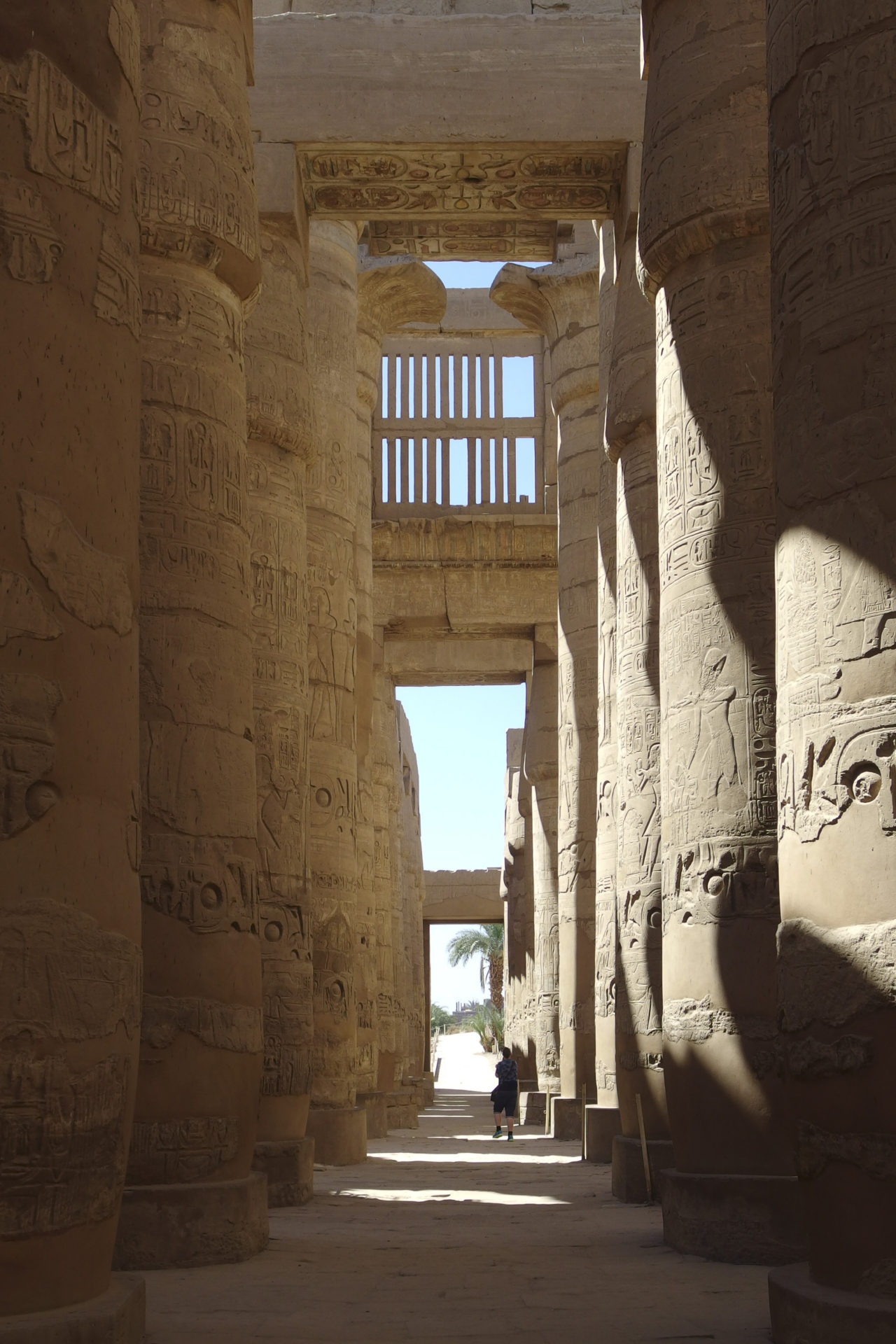
The clerestory at Karnak
Further midstream into the Nile is the Dendera Temple Complex, which contains windows that have an even closer relationship to its reliefs. The roof here is still intact and in good condition, and so the space inside the temple is pitch dark. A wall partially fills the space between the massive stone pillars lined at its façade, but the upper section is left open. When looking at this opening from the inside, one can clearly see the reliefs on the ceiling illuminated by the light it allows in. I stared upward dumbstruck for some time, just as people of ancient times must have done as well.
-

Light coming from the opening in the upper area between pillars illuminating the ceiling of the Dendera Temple Complex
The next window I found threw into relief a sun located on the inside of an opening that narrowed toward a small hole along with the light that poured in from it. While its shape was somewhat similar to the windows of the chapel in Ronchamp, the light that enters here combines to become one with the reliefs, giving one the false sense that the sun truly is right there.
-
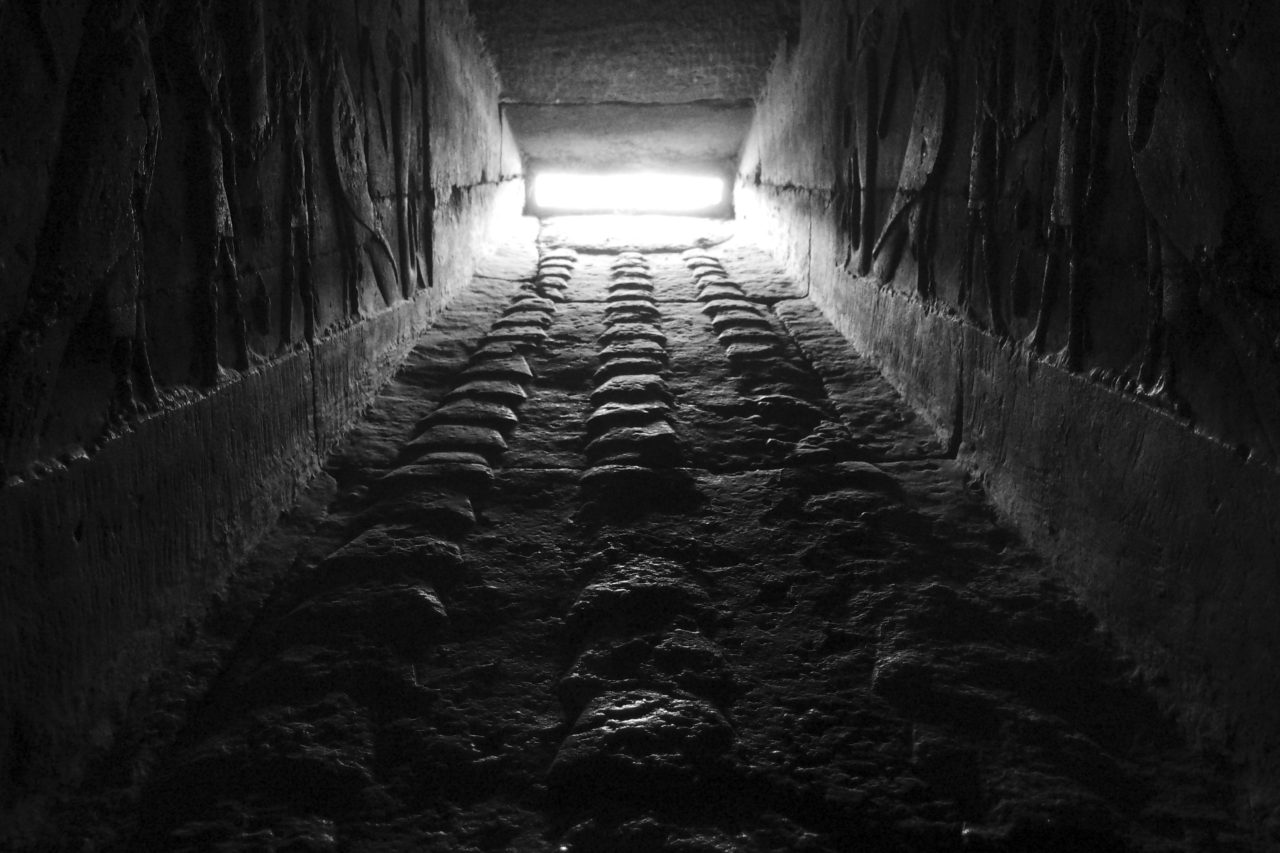
A window that mixes light with reliefs
There are many windows here, and one can be found at the landing of a small staircase at an angle that makes it appear to be an extension of the stairs. Its shape seems to suck you in, enticing you to walk toward it.
-

A window created in continuity with stairs
I climbed up and up its spiraling staircase in darkness. At last, I arrived at a small hut on the rooftop with a fully open skylight on its ceiling. On its inner side is a carving of a mummy laid out on a bed. There is also a hole opened on its floor that seems to suck one’s soul into itself, or perhaps it is reminiscent of the moment a UFO abducts a human. The path of the upward-winding temple ultimately leads out of this window and into the sky. Rome’s Pantheon, Palladio’s Villa la Rotonda, Takamasa Yoshizaka’s Japan Pavilion at the Venice Biennale… The sight here brought so many structures to my mind.
Coming this far, though, aroused within me more of a sense of fear than one of interest. How strange it is that we can now easily enter inside this space that few would have been able to see in ancient times. I returned to my car with the sense that I’d seen something that I should not have.
-
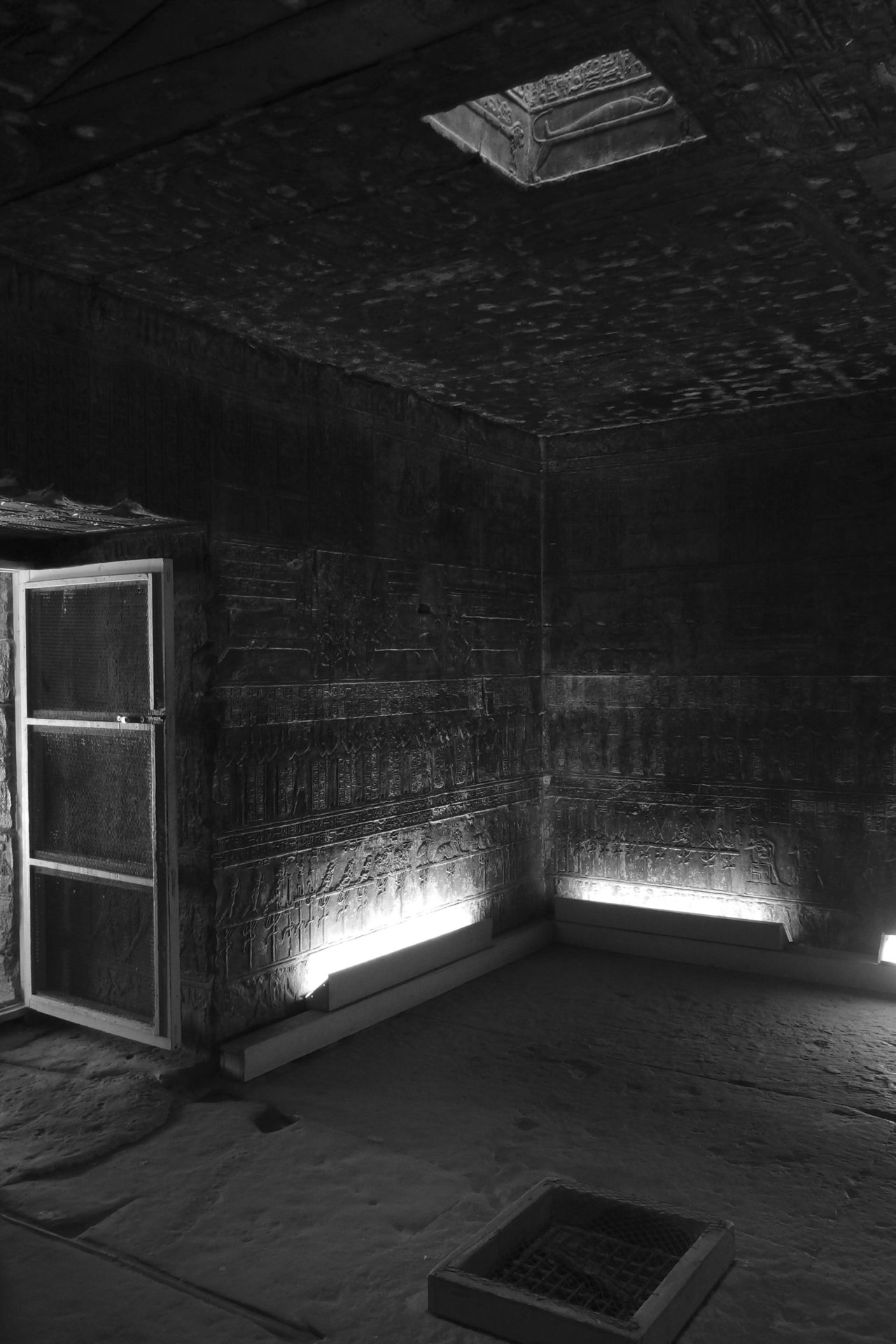
The skylight at Dendera
I thought to myself as I was once more jostled by our car, driving through the desert. Could it be that most architectural techniques and flourishes had already been done in Egypt? This was the direct and overwhelming sense I got while rushing northward along the Nile. Something massive permeated this entire riverside region.
A comprehensive collection of man-made objects that project a sense of innocence, and at times even fear. Perhaps this is what is described by the word “civilization.”
NOTE
[1] Clerestory: A window used for lighting and/or circulation located on the upper portion of a structure. Often seen in buildings such as churches.
Ryuki Taguma
Taguma was born in Shizuoka prefecture in 1992 and grew up in Tokyo. In 2014, he graduated from the Department of Architecture (Creative Science and Engineering) of Waseda University. He received a gold medal for his graduation project in architecture and received top recognition for his graduation thesis. From April 2014 he began life as a graduate student in architectural history, studying under Norihito Nakatani. In June of 2014 he proposed a restoration plan for residents of Izu Ōshima for a sediment-related disaster. This would become his graduation project. In 2015 he took a year off from school to travel around villages and folk houses in 11 countries in Asia and the Middle East, visiting countries from China to Israel. In Yilan County,Taiwan, he worked as an intern at Fieldoffice Architects.

